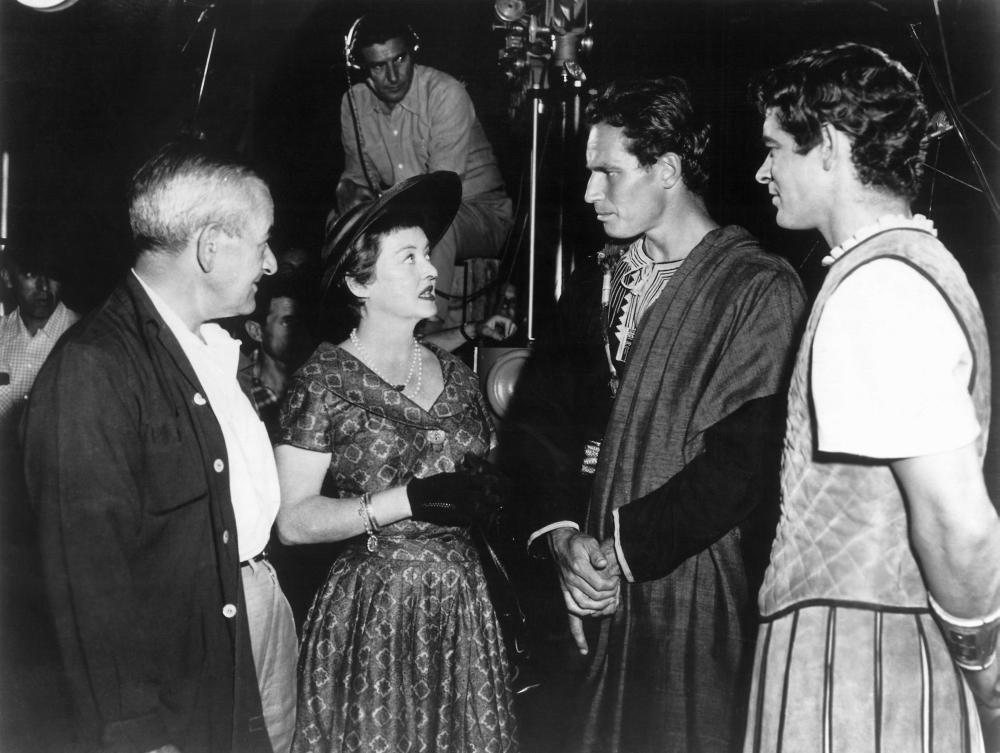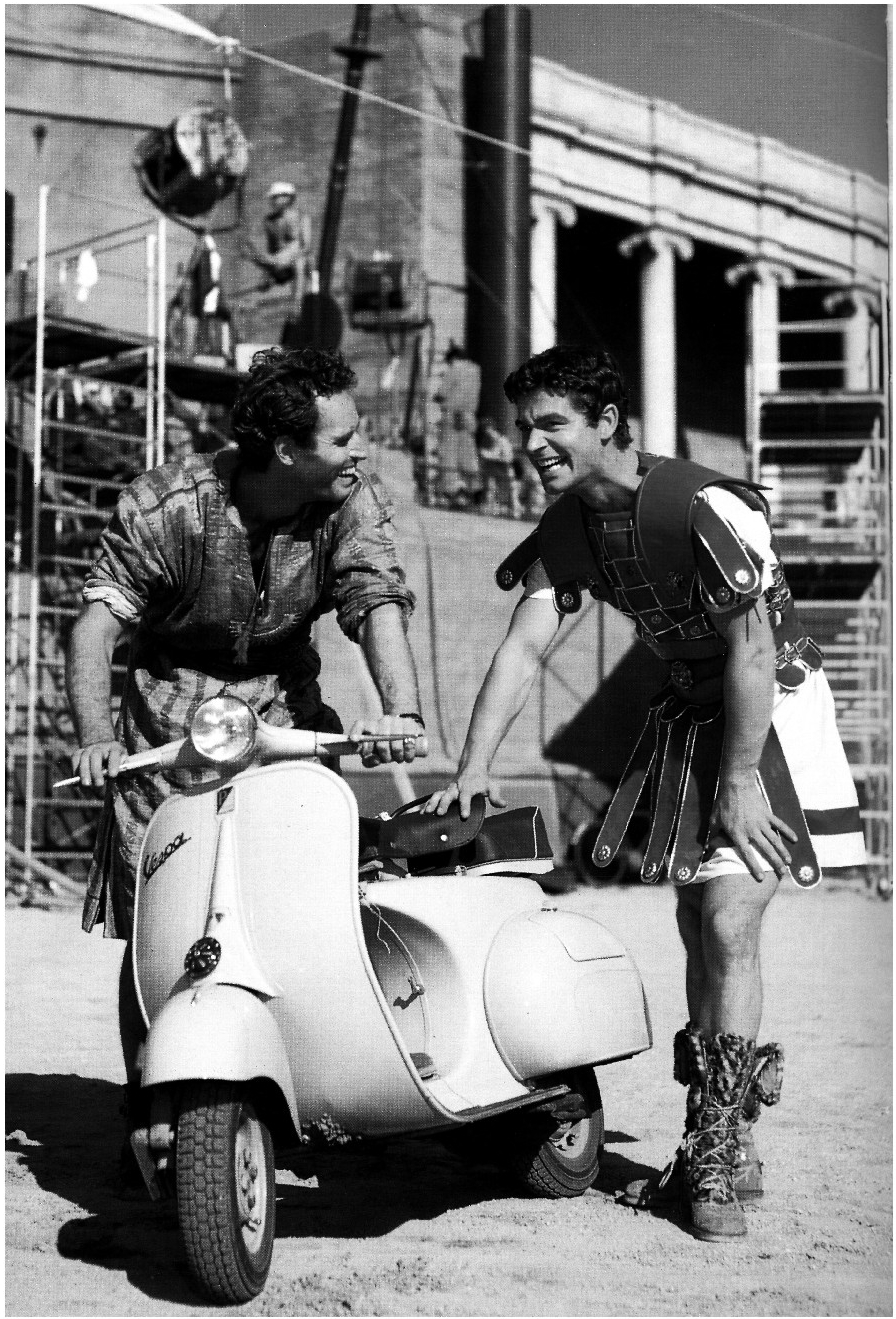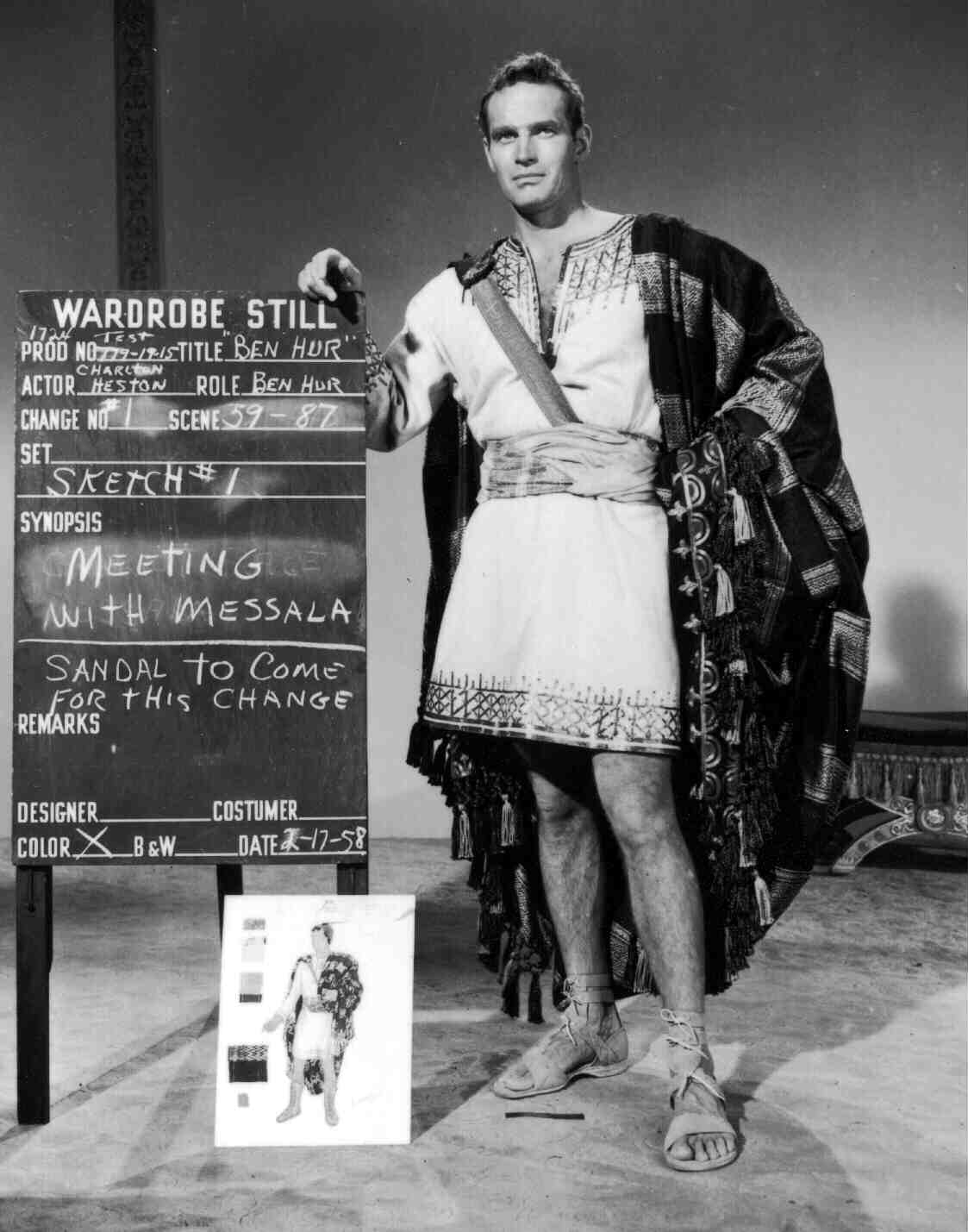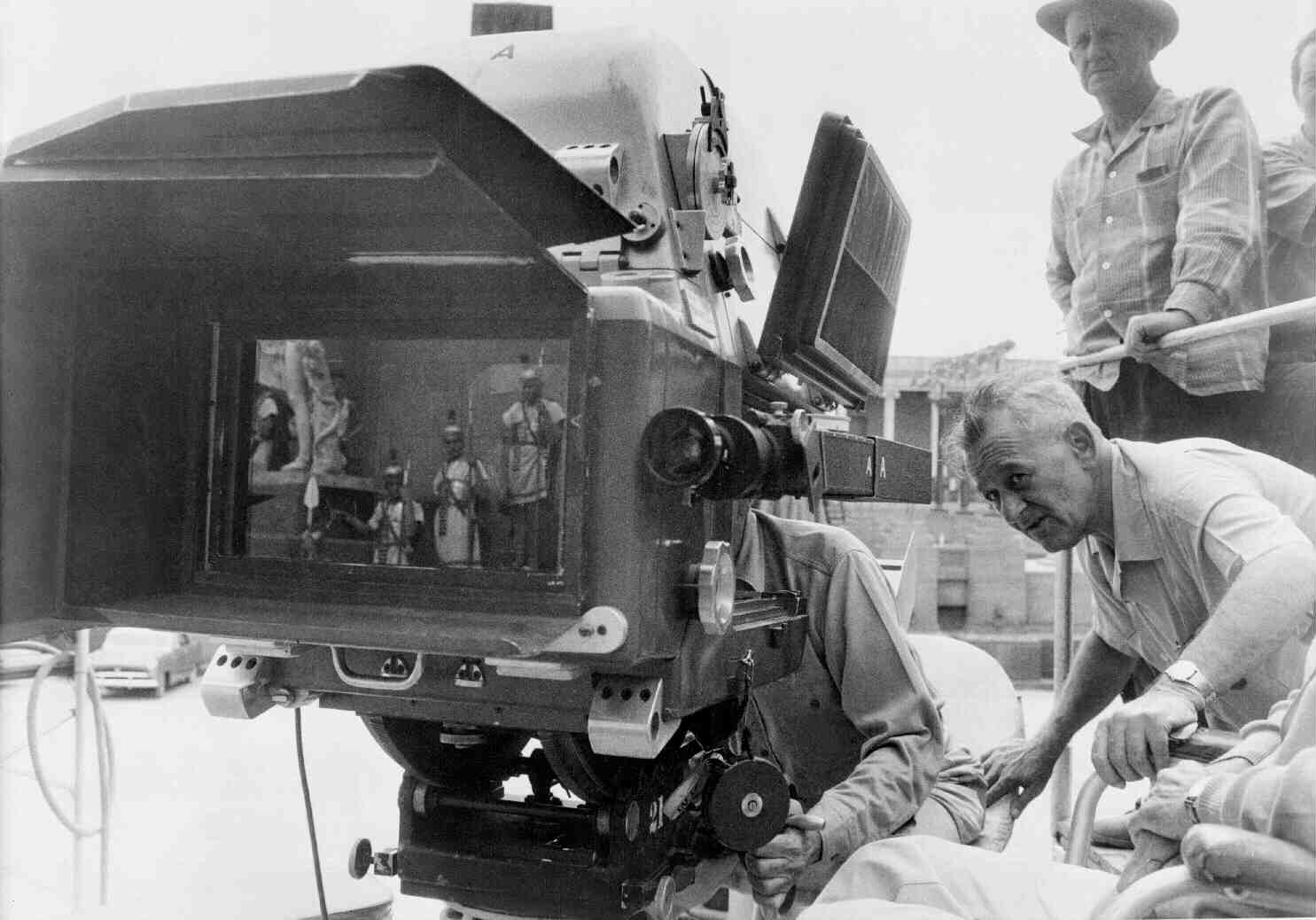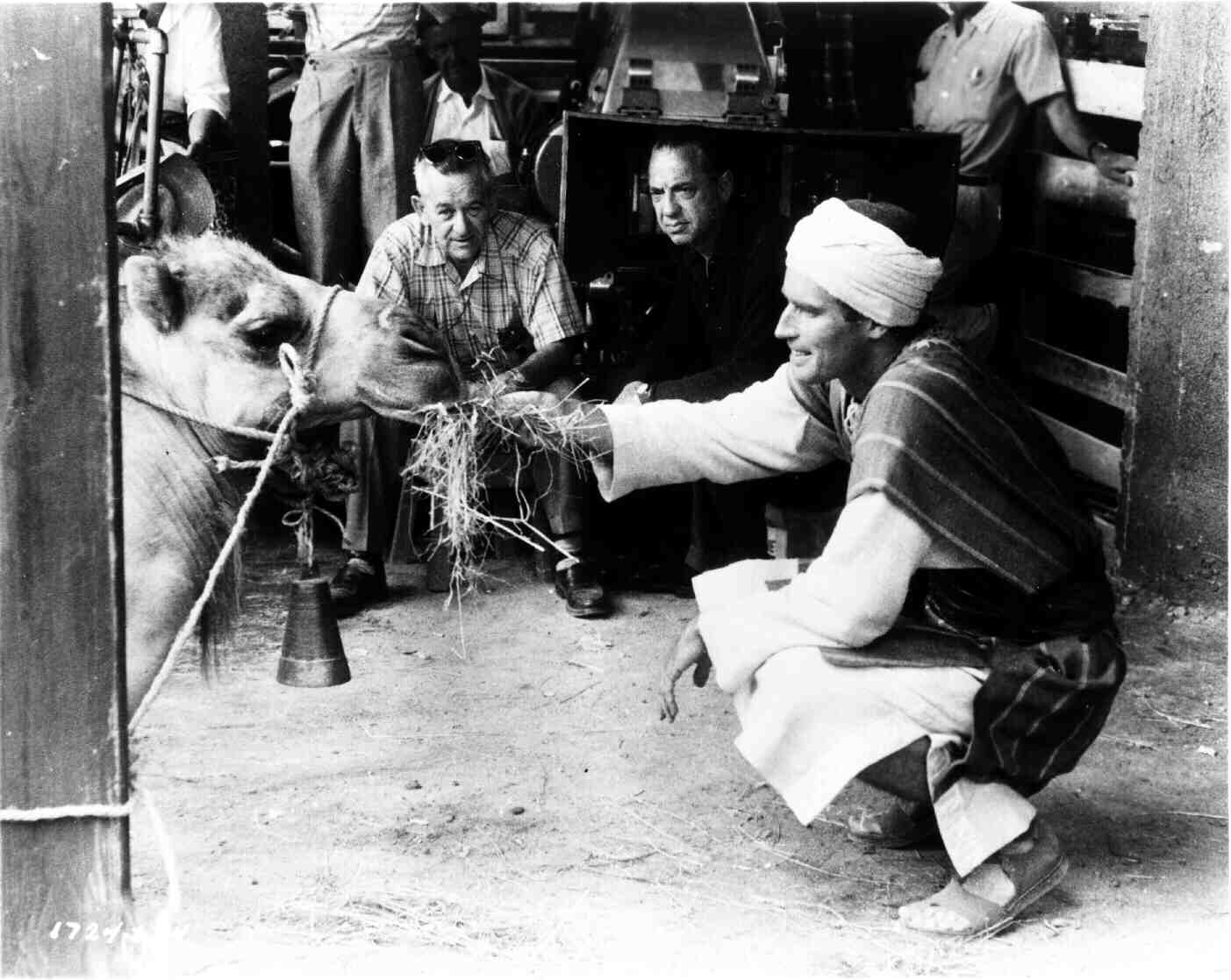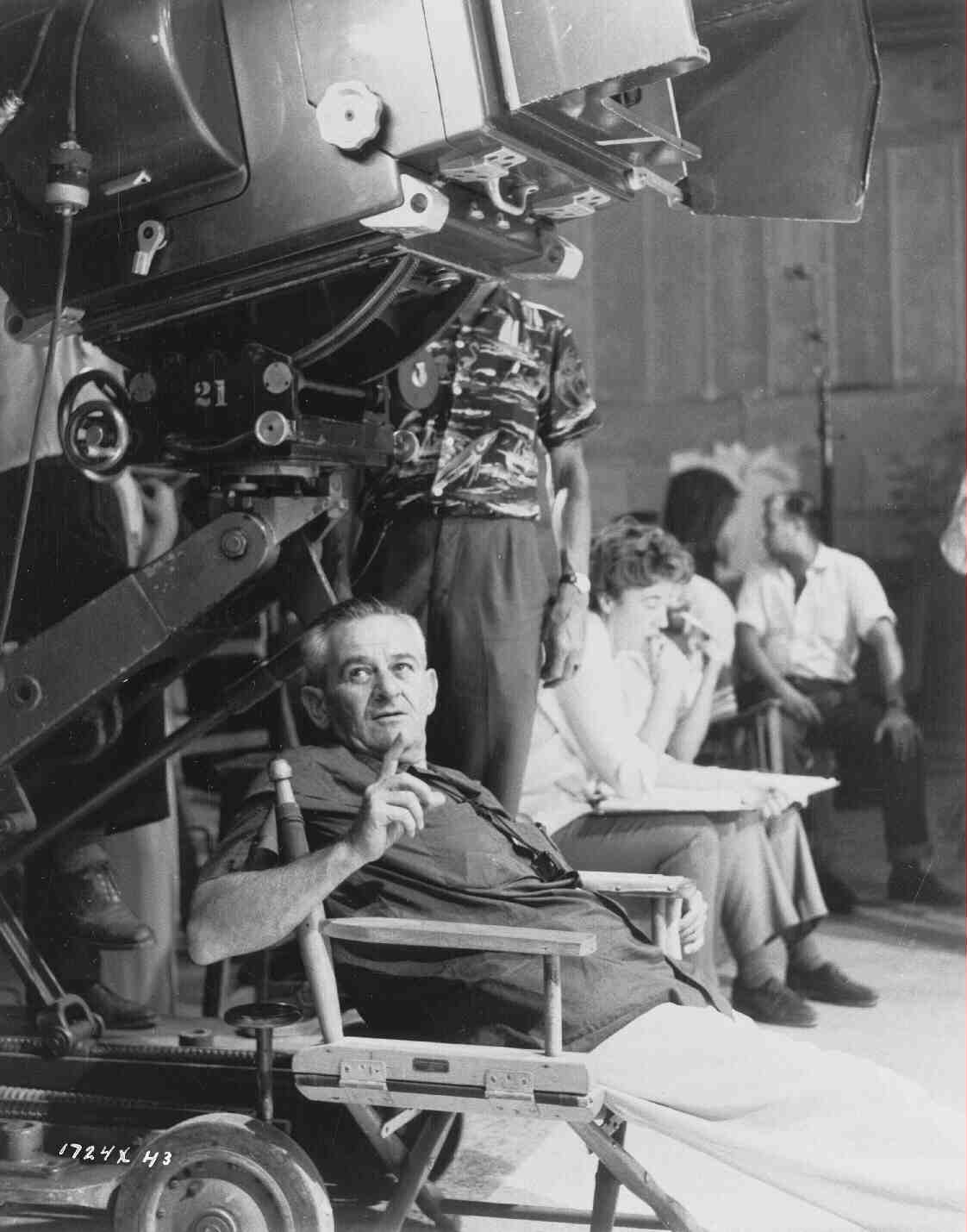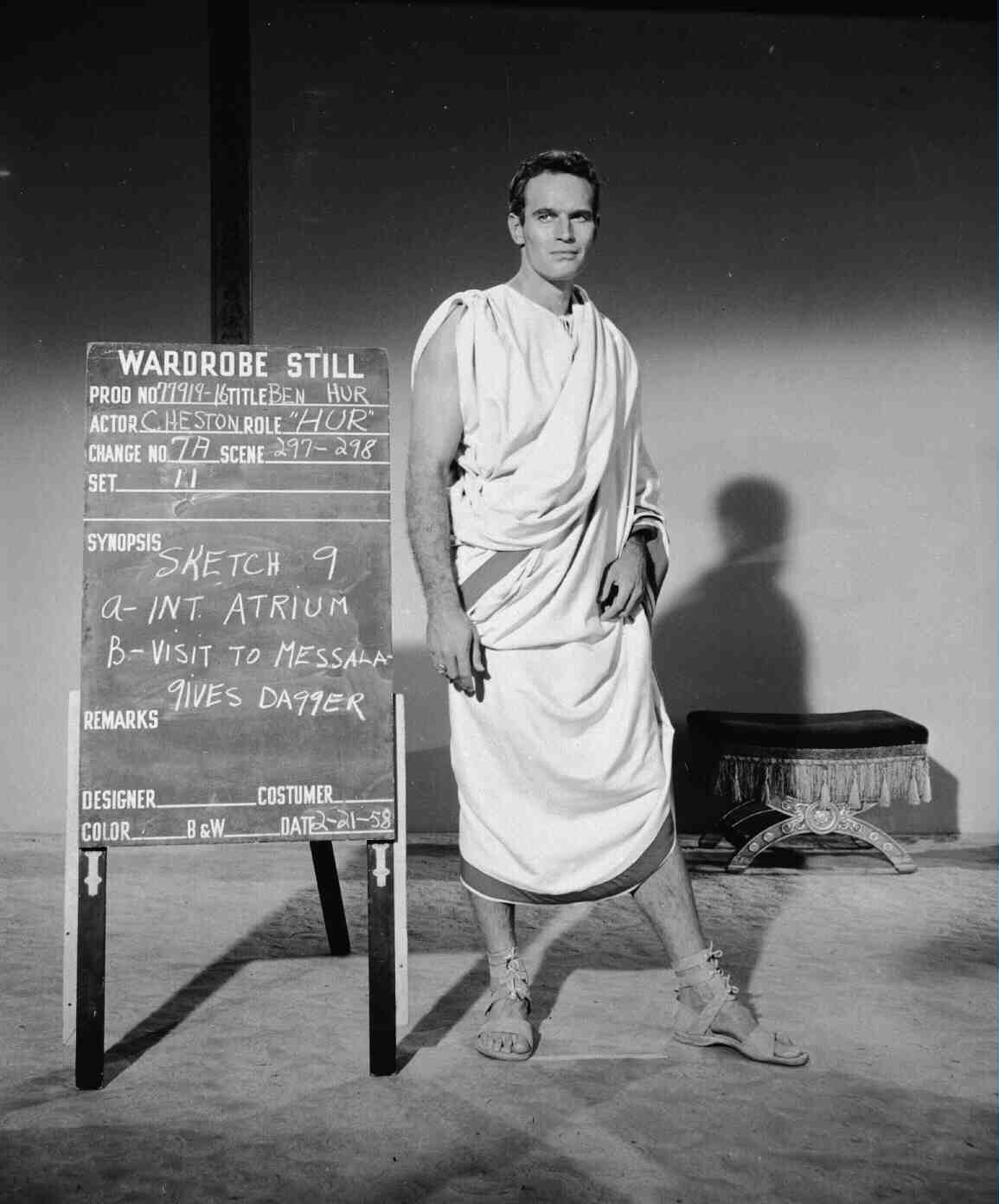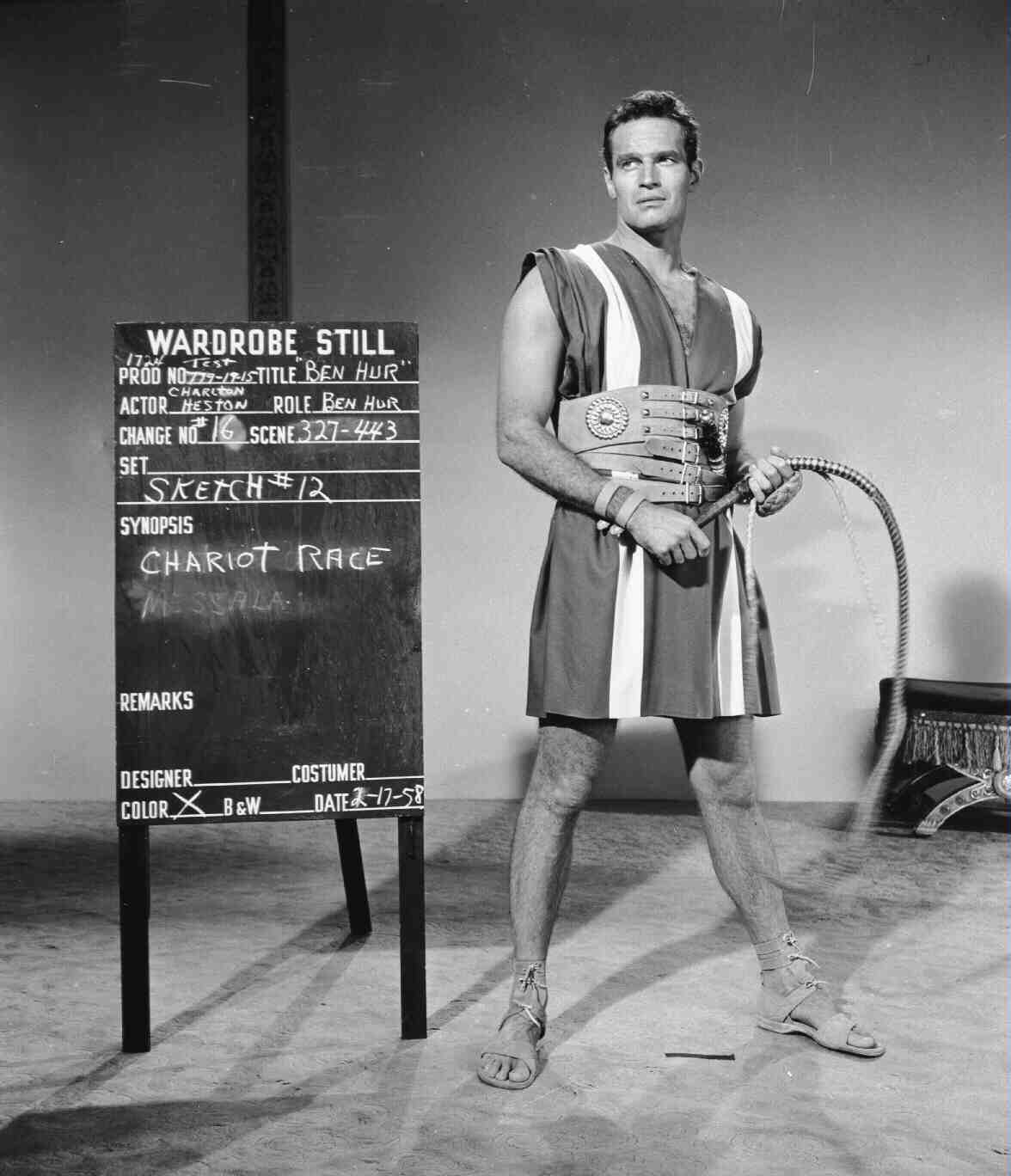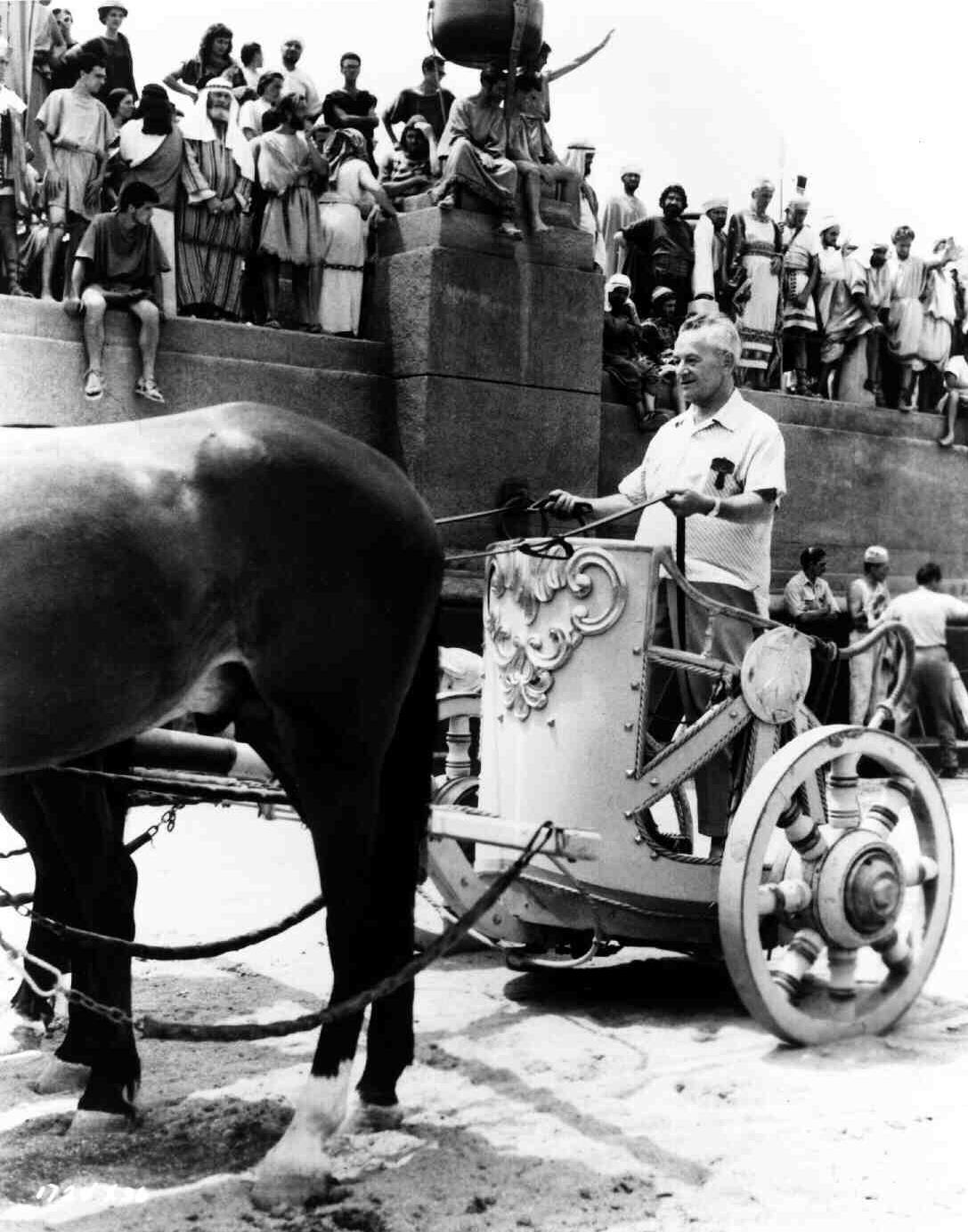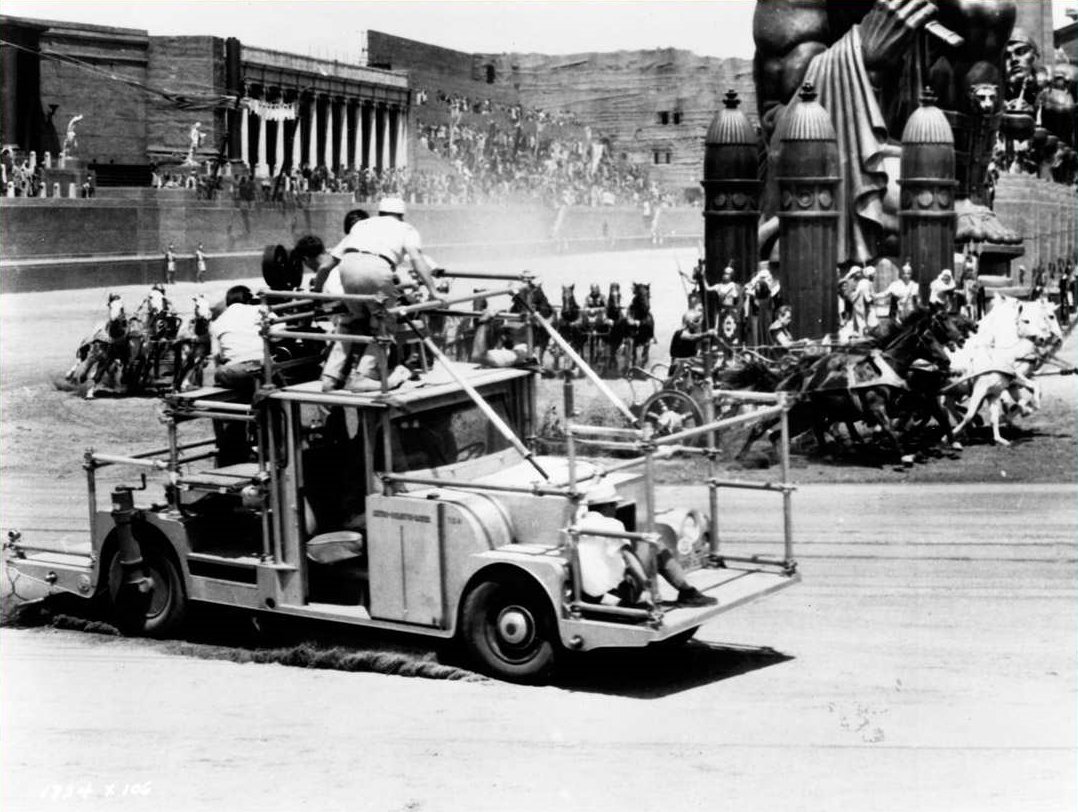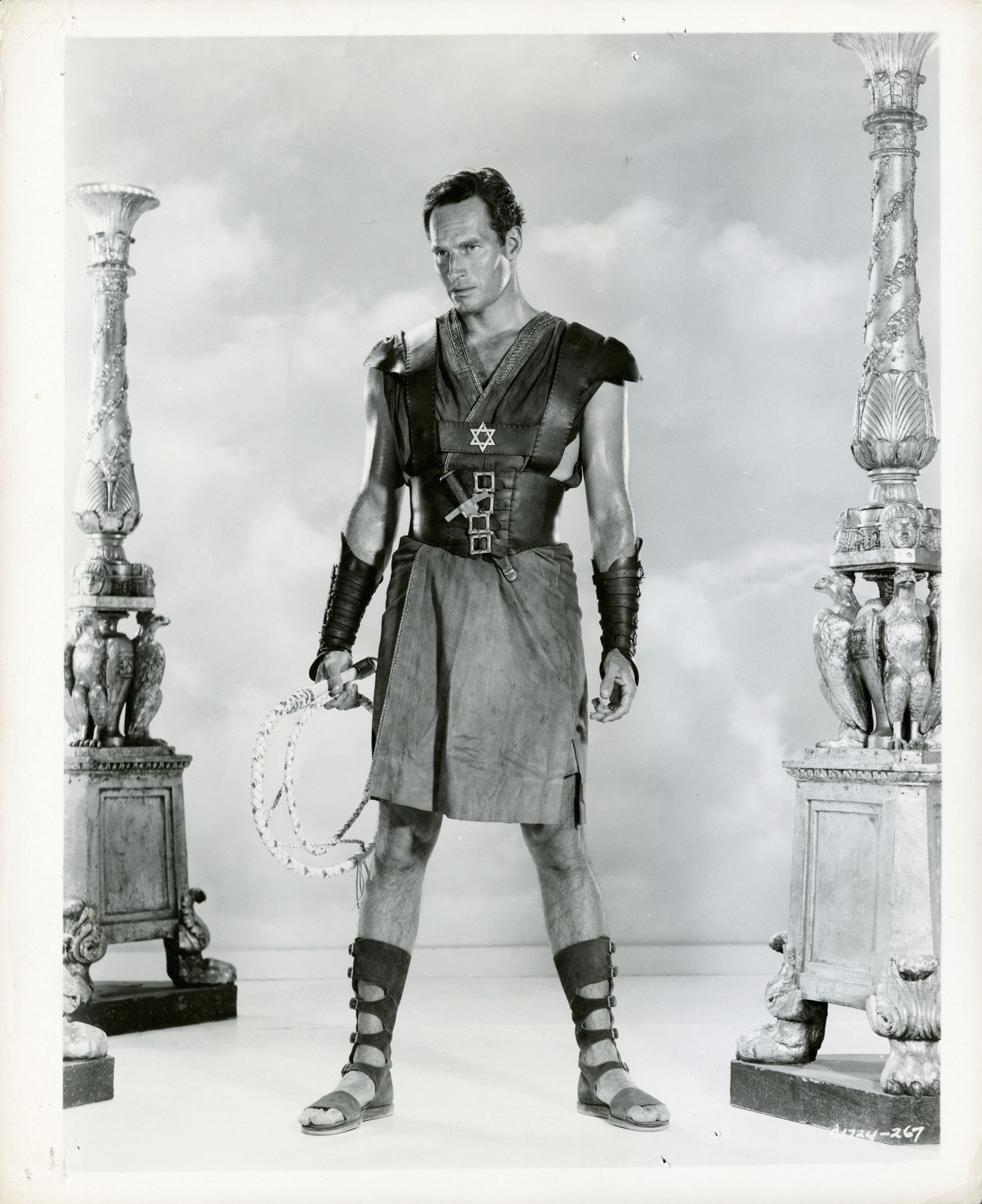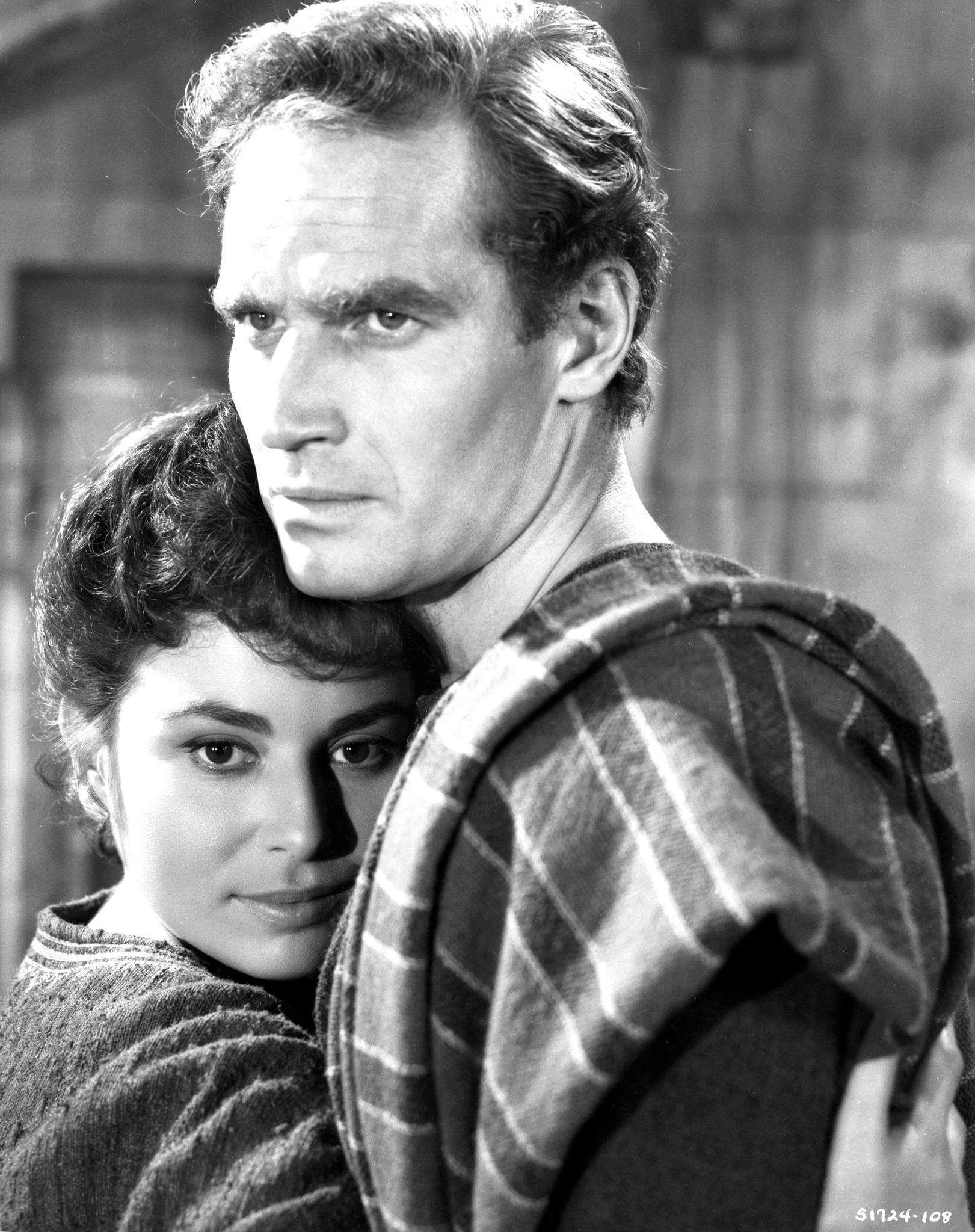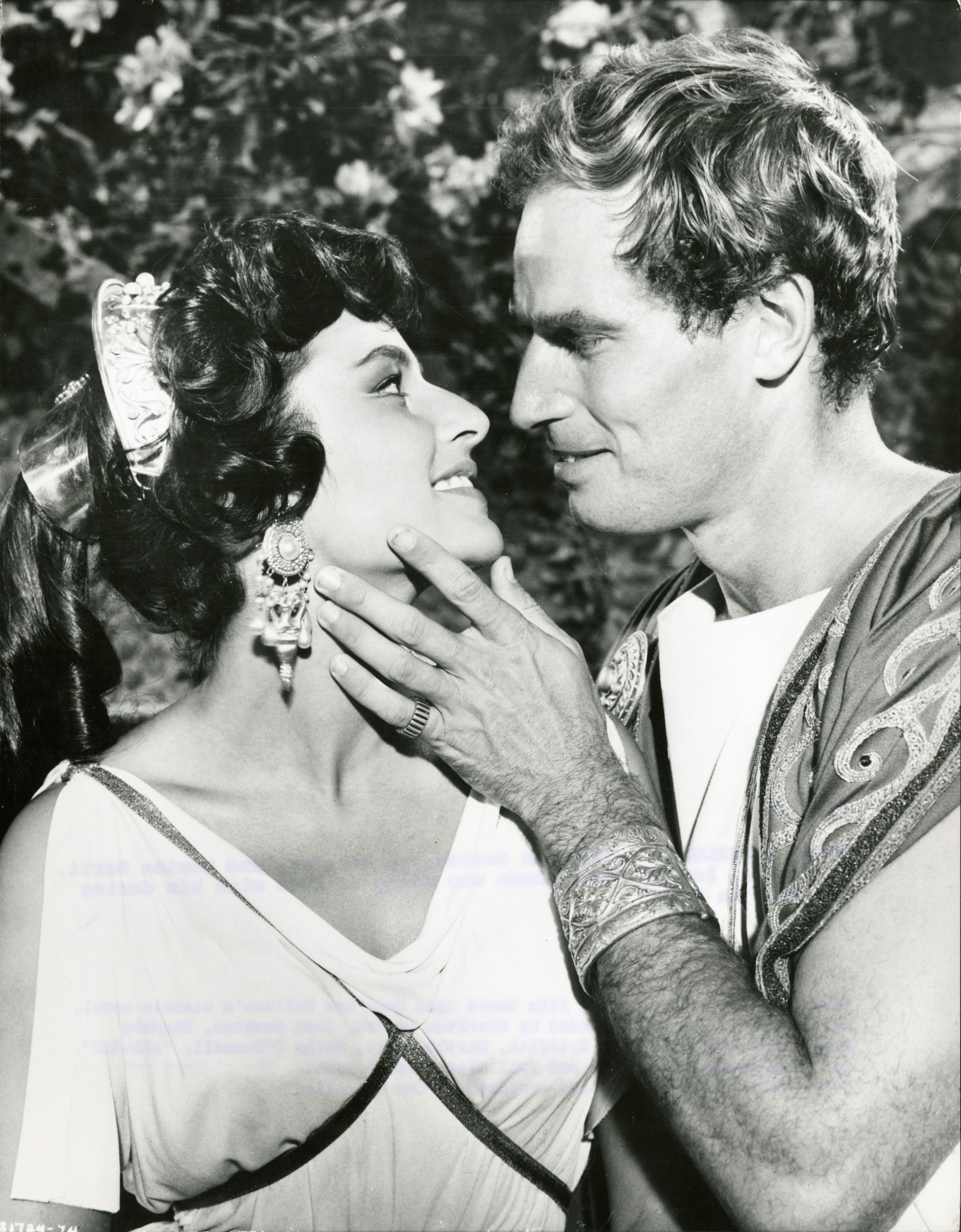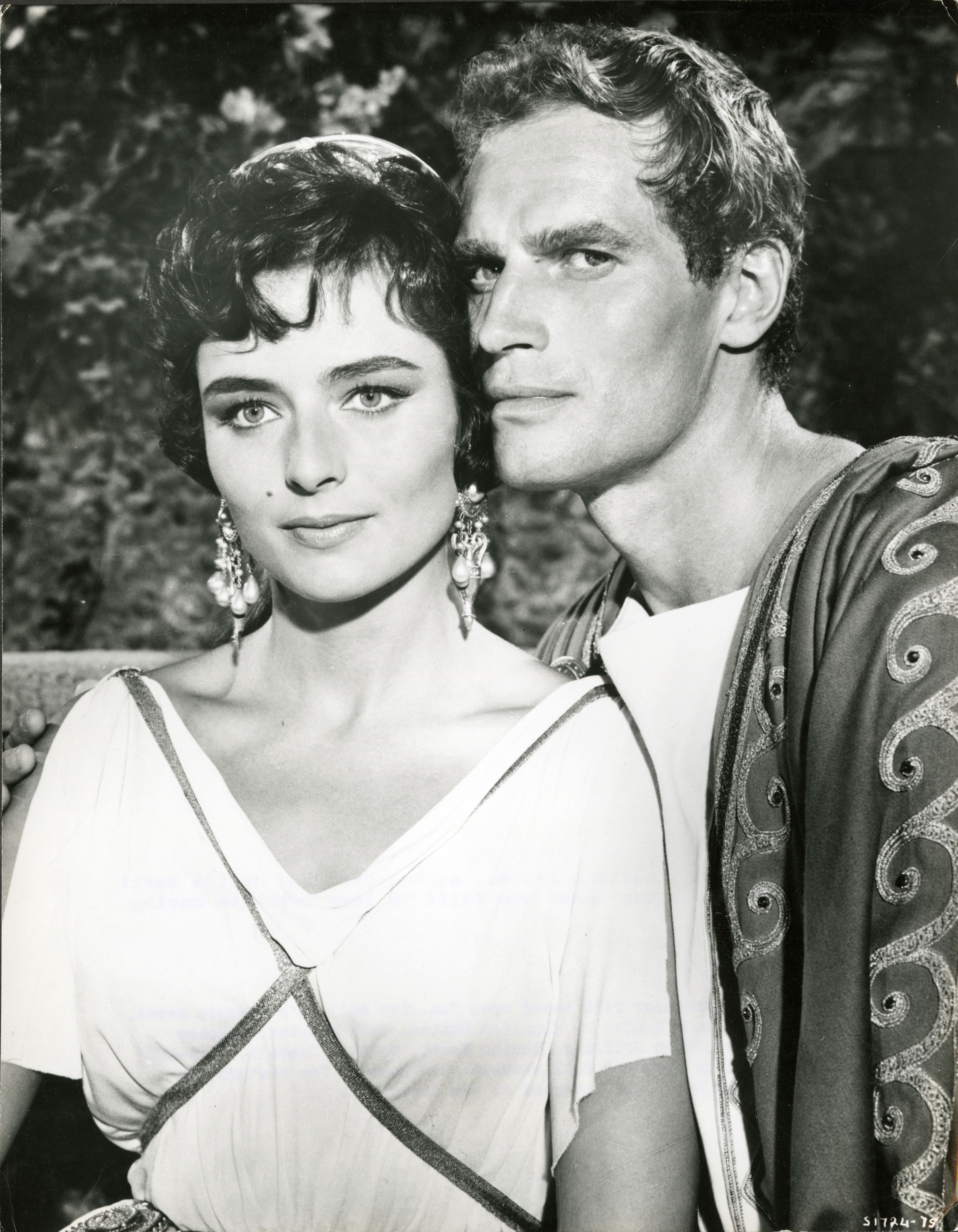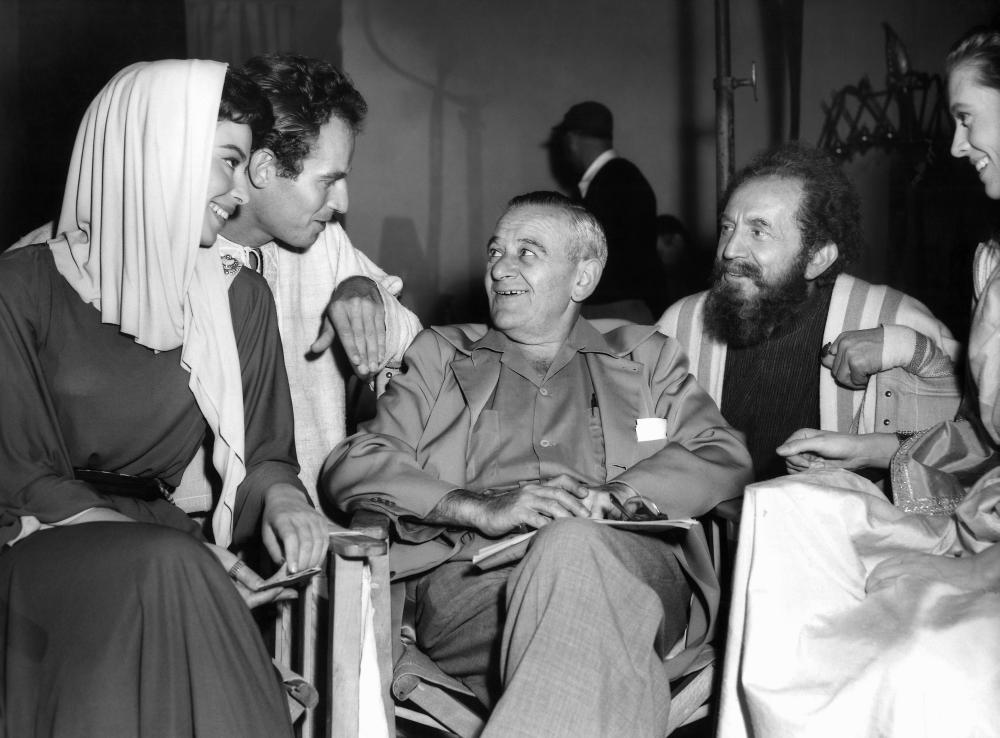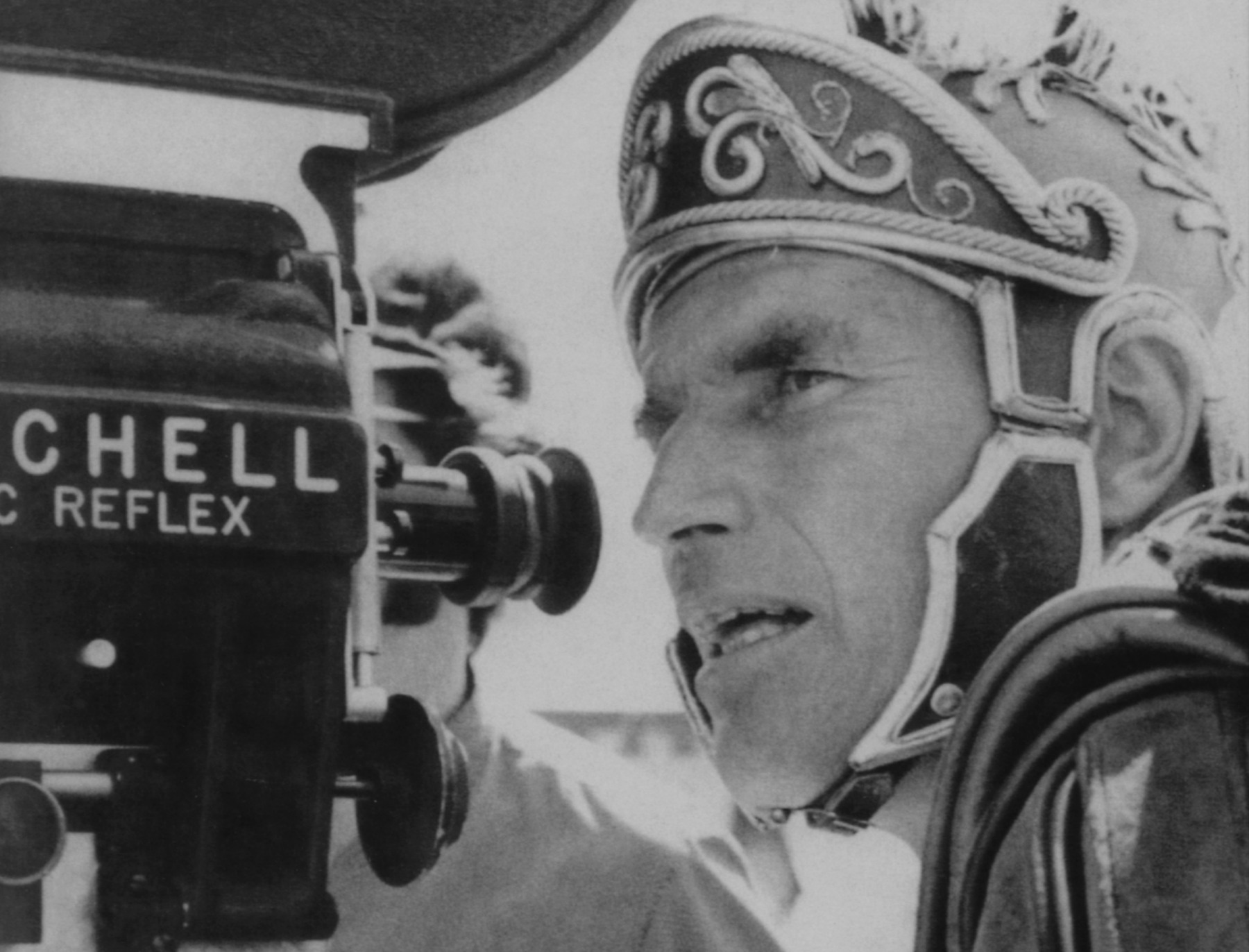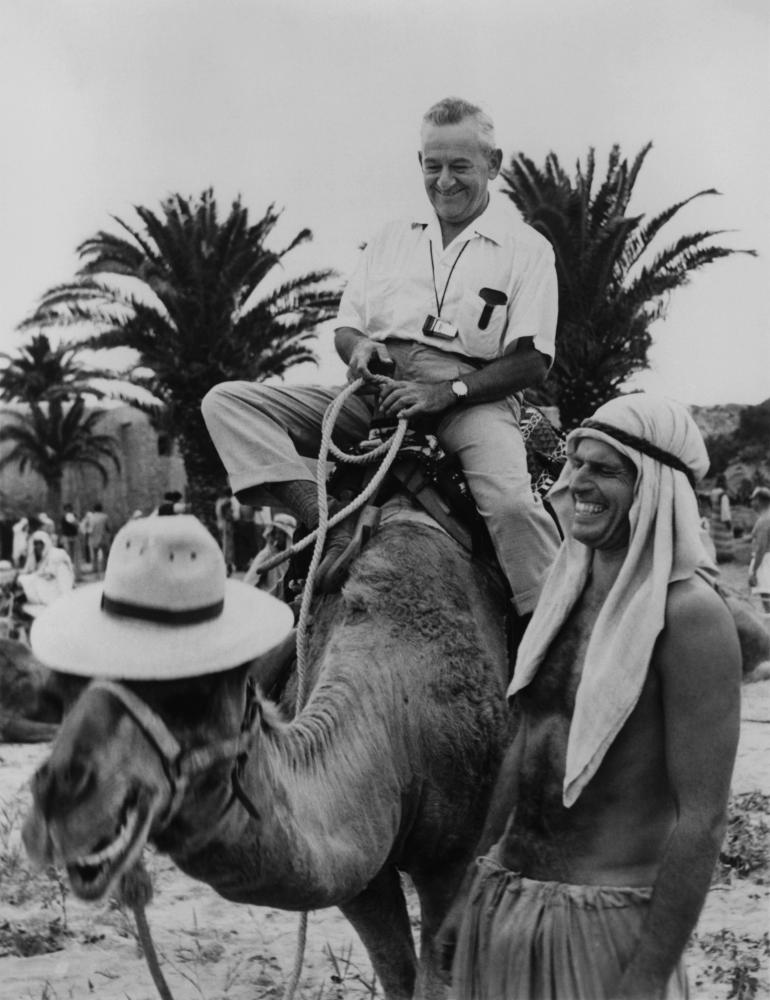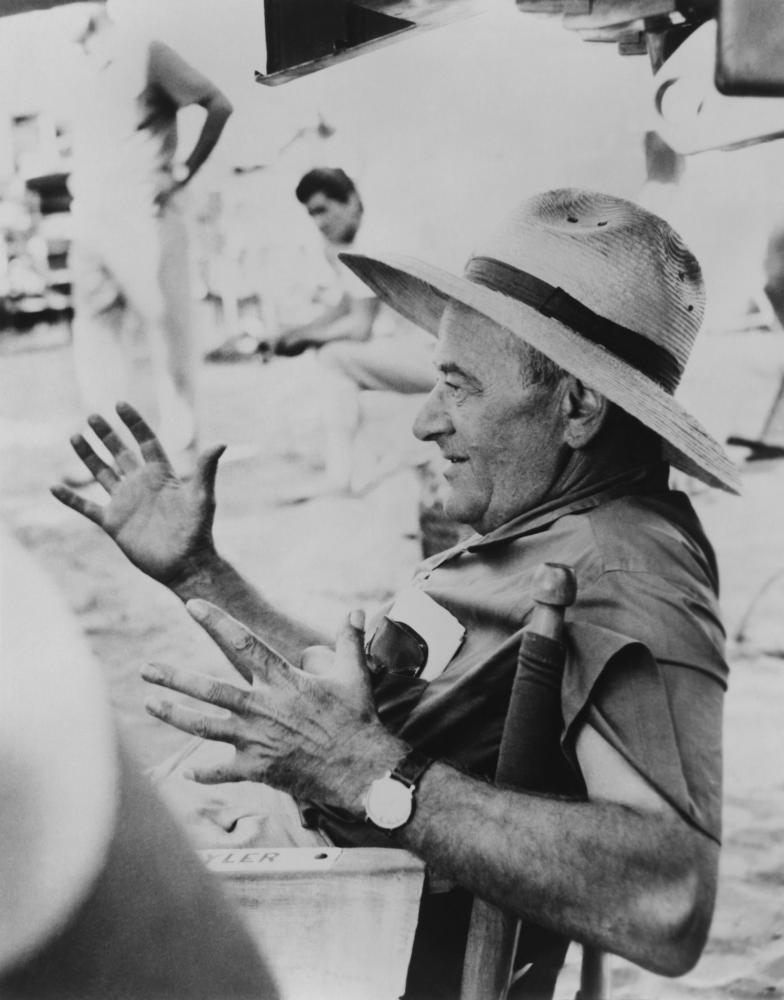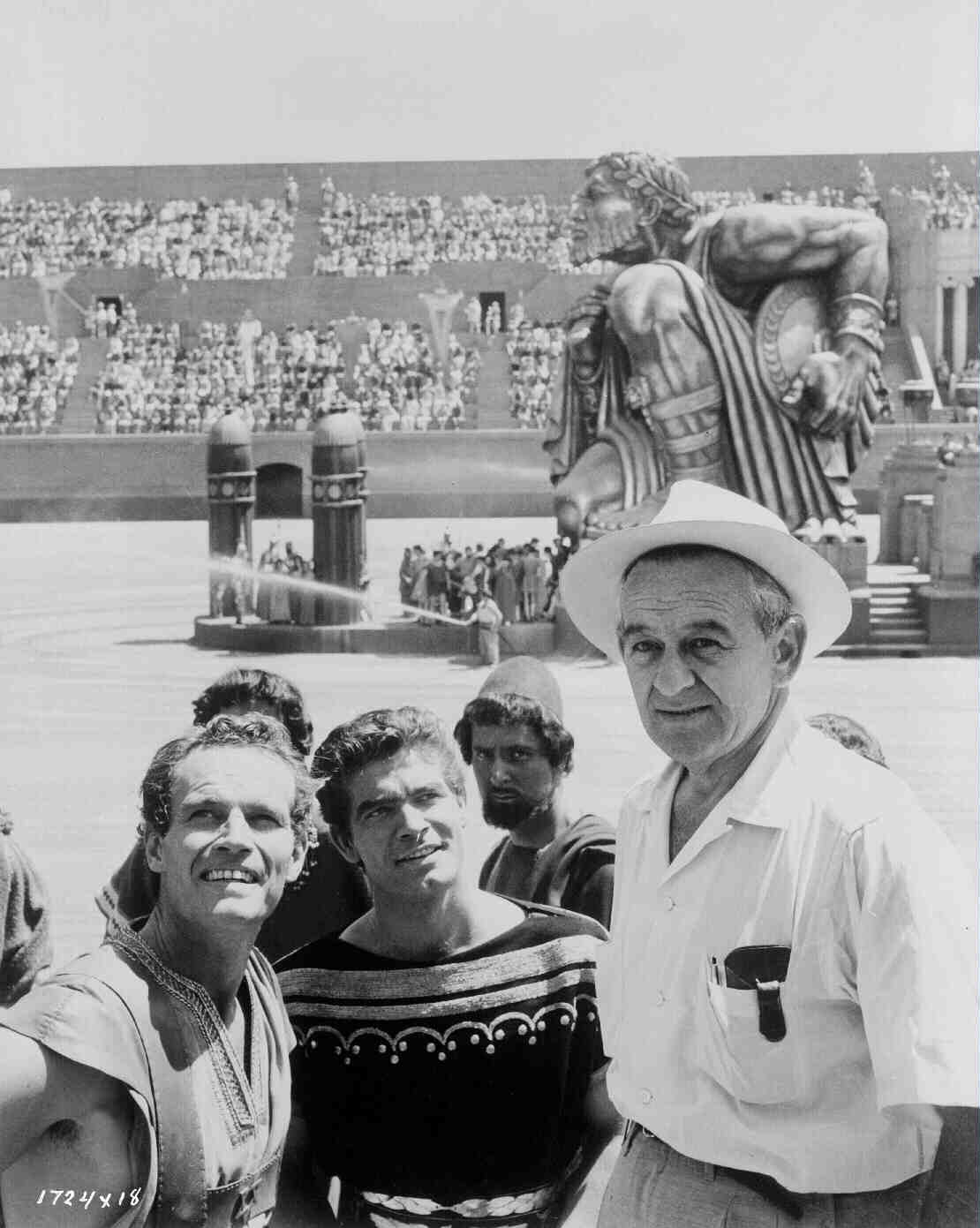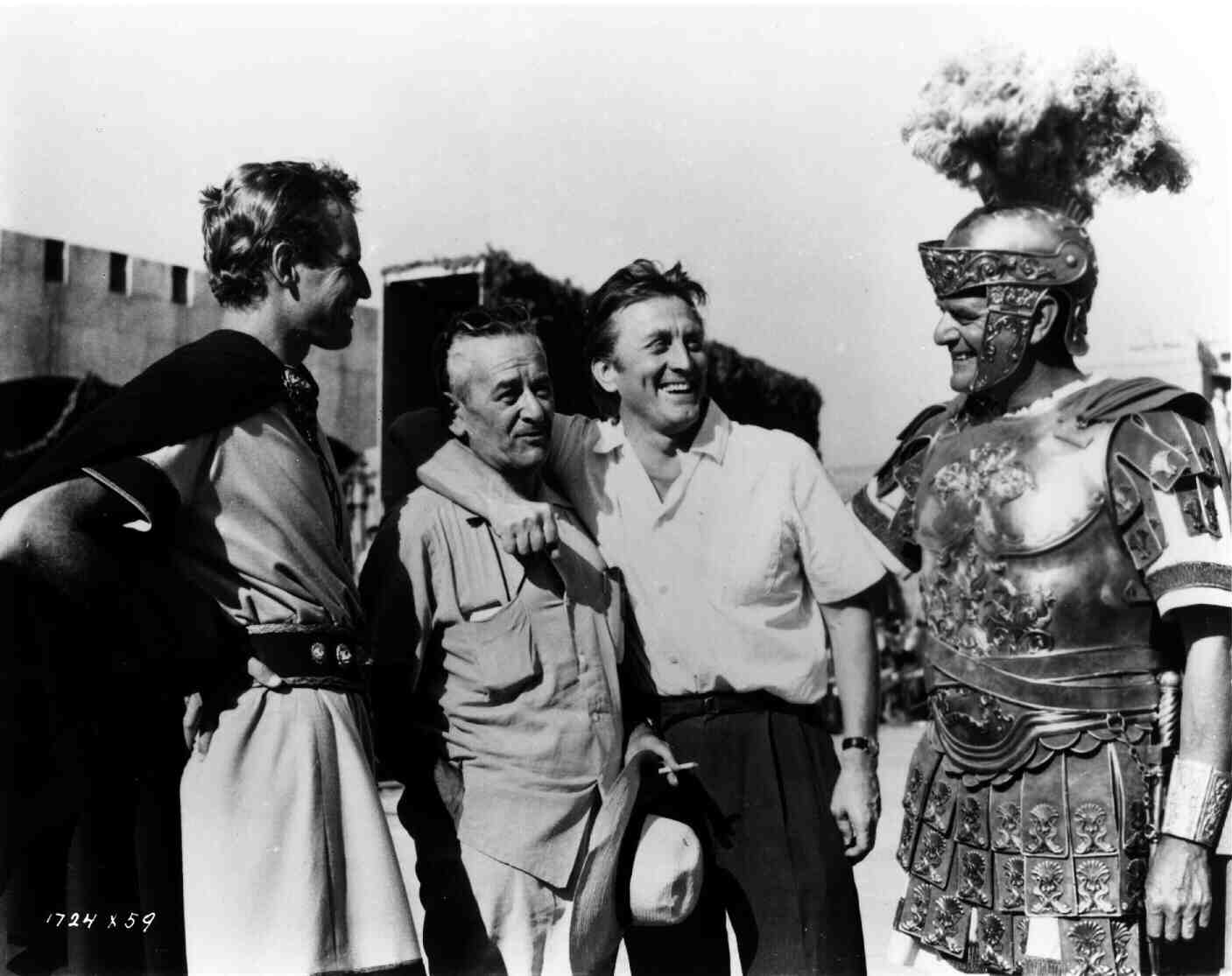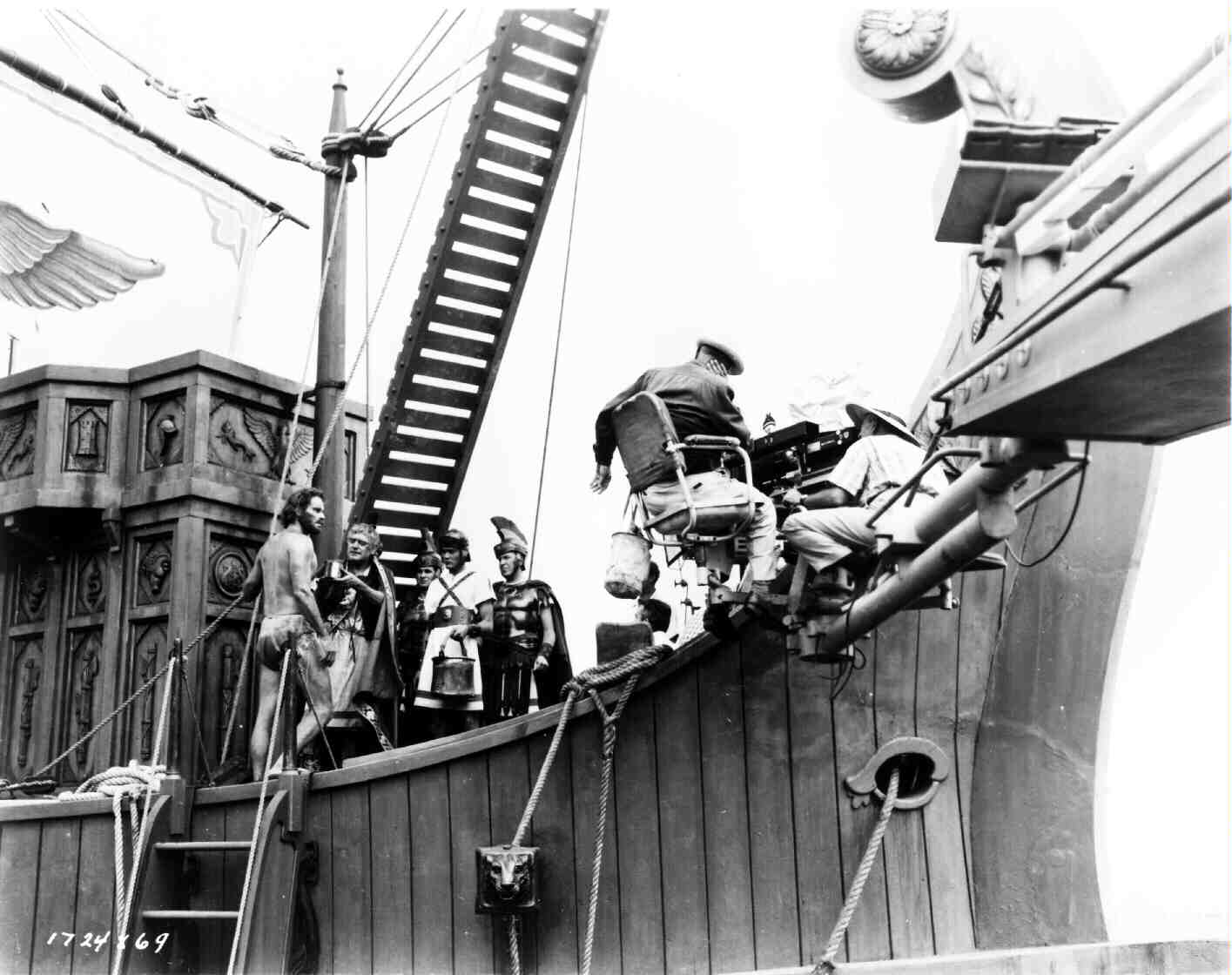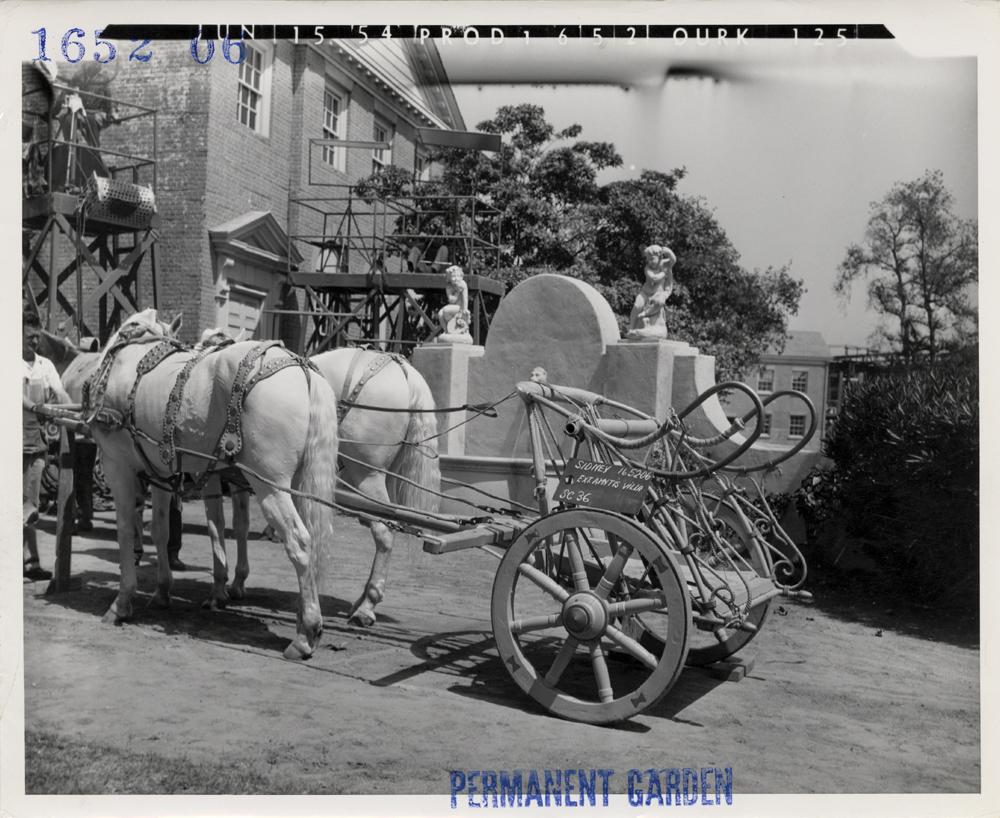Ben-Hur the 1959 American epic historical drama film, directed by William Wyler and starring Charlton Heston as the title character, was at the time the most expensive film ever made. It was a remake of the 1925 silent film (Wyler worked as an assistant-director on the 1925 version) with the same name which had been adapted from Civil War general Lew Wallace’s 1880 novel Ben-Hur: A Tale of the Christ (Wallace’s book was the first work of fiction to be blessed by a pope, Leo XIII). Variety described the epic movie “a majestic achievement, representing a superb blending of the motion picture arts by master craftsmen. Gone With the Wind, Metro’s own champion all-time top grosser, will eventually have to take a back seat.” Filming commenced on May 18, 1958, and wrapped on January 7, 1959, with shooting lasting for 12 to 14 hours a day, six days a week. The nine-minute chariot race has become one of cinema’s most famous sequences, and the film score, composed and conducted by Miklós Rózsa, is the longest ever composed for a film and was highly influential on cinema for more than 15 years.
Following a $14.7 million marketing effort, Ben-Hur premiered at Loew’s State Theatre in New York City on November 18, 1959. It was the fastest-grossing, as well as the highest-grossing film of 1959. Ben-Hur was nominated for twelve Academy Awards and won an unprecedented eleven.
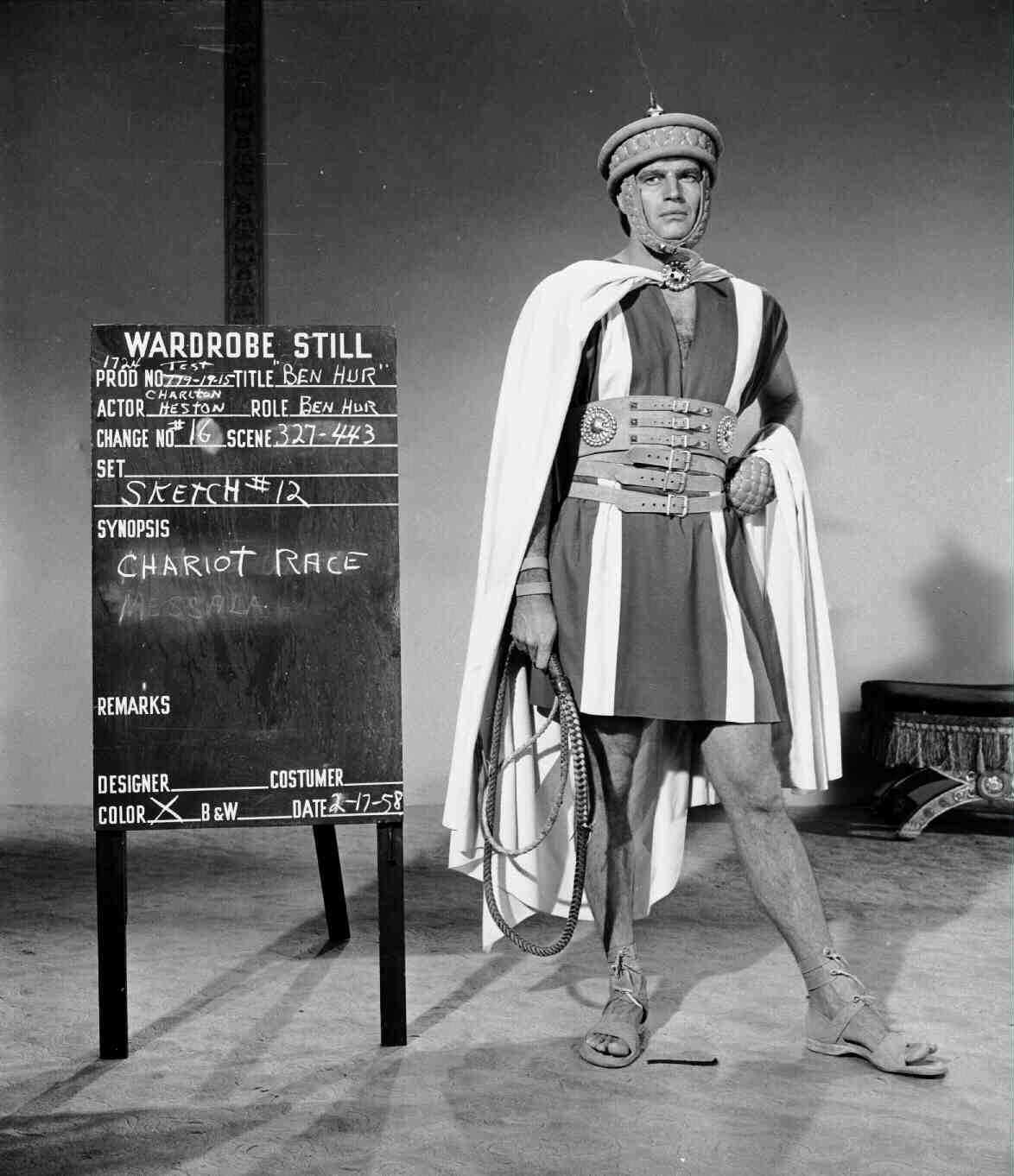
Costume designer Elizabeth Haffenden oversaw a staff of 100 wardrobe fabricators to make the costumes.
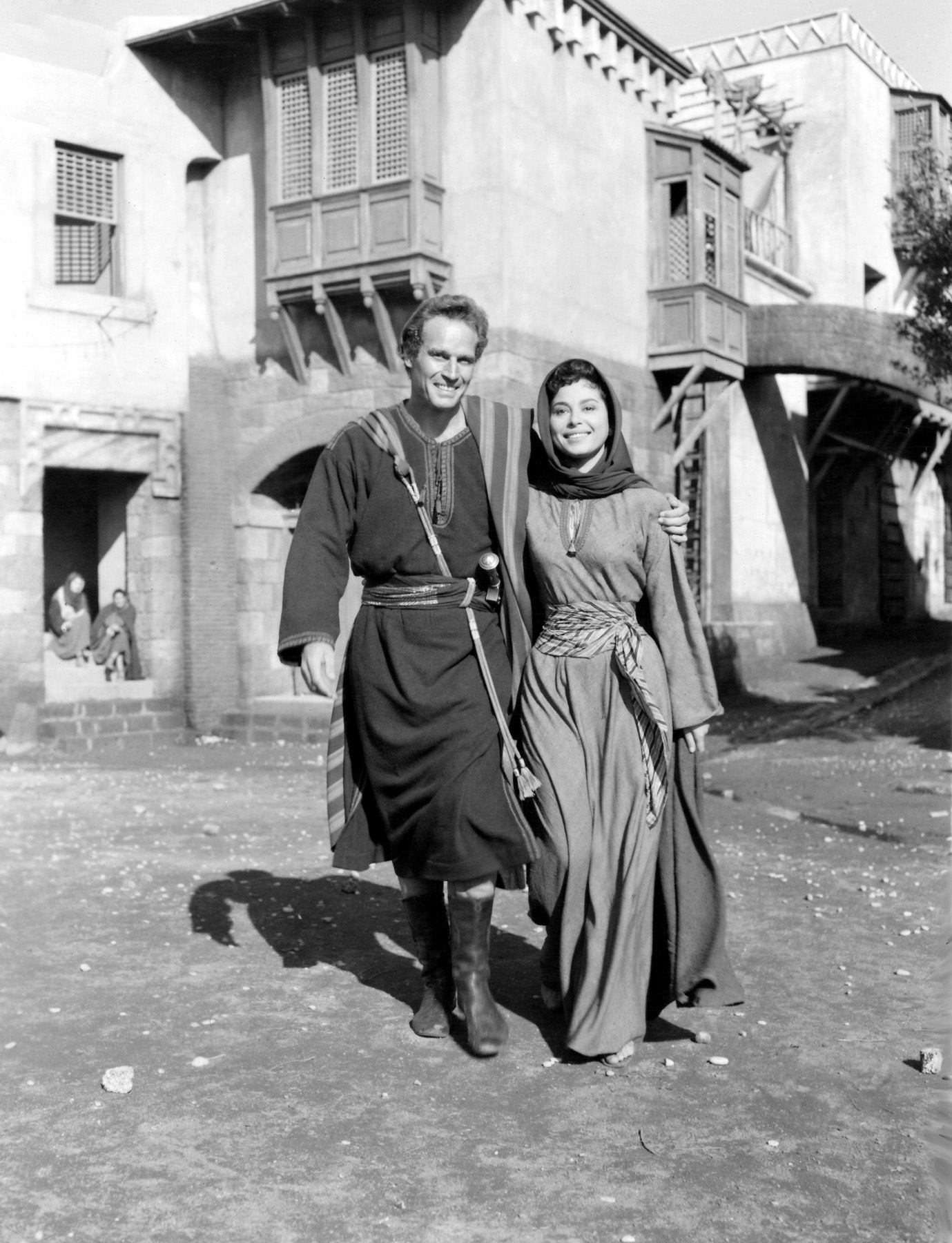
The 1959 Academy Award®-winning film “Ben-Hur” starred Charlton Heston (left) in the title role for which he won the Best Actor Oscar®. Heston is pictured here on the film’s set in Rome with Haya Harareet (right), who played Esther.
The chariot race in Ben-Hur was directed by Andrew Marton and Yakima Canutt, filmmakers who often acted as second unit directors on other people’s films. Each man had an assistant director, who shot additional footage. According to Wikipedia these were Sergio Leone, who was senior assistant director in the second unit and responsible for retakes. William Wyler shot the “pageantry” sequence that occurs before the race, scenes of the jubilant crowd, and the victory scenes after the race concludes. The “pageantry” sequence before the race begins is a shot-by-shot remake of the same sequence from the 1925 silent film version. Knowing that the chariot race would be primarily composed of close-up and medium shots, Wyler added the parade in formation (even though it was not historically accurate) to impress the audience with the grandeur of the arena.
The chariot scene took five weeks (spread over three months) to film at a total cost of $1 million and required more than 200 miles (320 km) of racing to complete.Seven thousand extras were hired to cheer in the stands. Economic conditions in Italy were poor at the time, and as shooting for the chariot scene wound down only 1,500 extras were needed on any given day. On June 6, more than 3,000 people seeking work were turned away. The crowd rioted, throwing stones and assaulting the set’s gates until police arrived and dispersed them. Dynamite charges were used to show the chariot wheels and axles splintering from the effects of Messala’s barbed-wheel attacks. Three lifelike dummies were placed at key points in the race to give the appearance of men being run over by chariots.
Would you like to support Flashbak?
Please consider making a donation to our site. We don't want to rely on ads to bring you the best of visual culture. You can also support us by signing up to our Mailing List. And you can also follow us on Facebook, Instagram and Twitter. For great art and culture delivered to your door, visit our shop.
